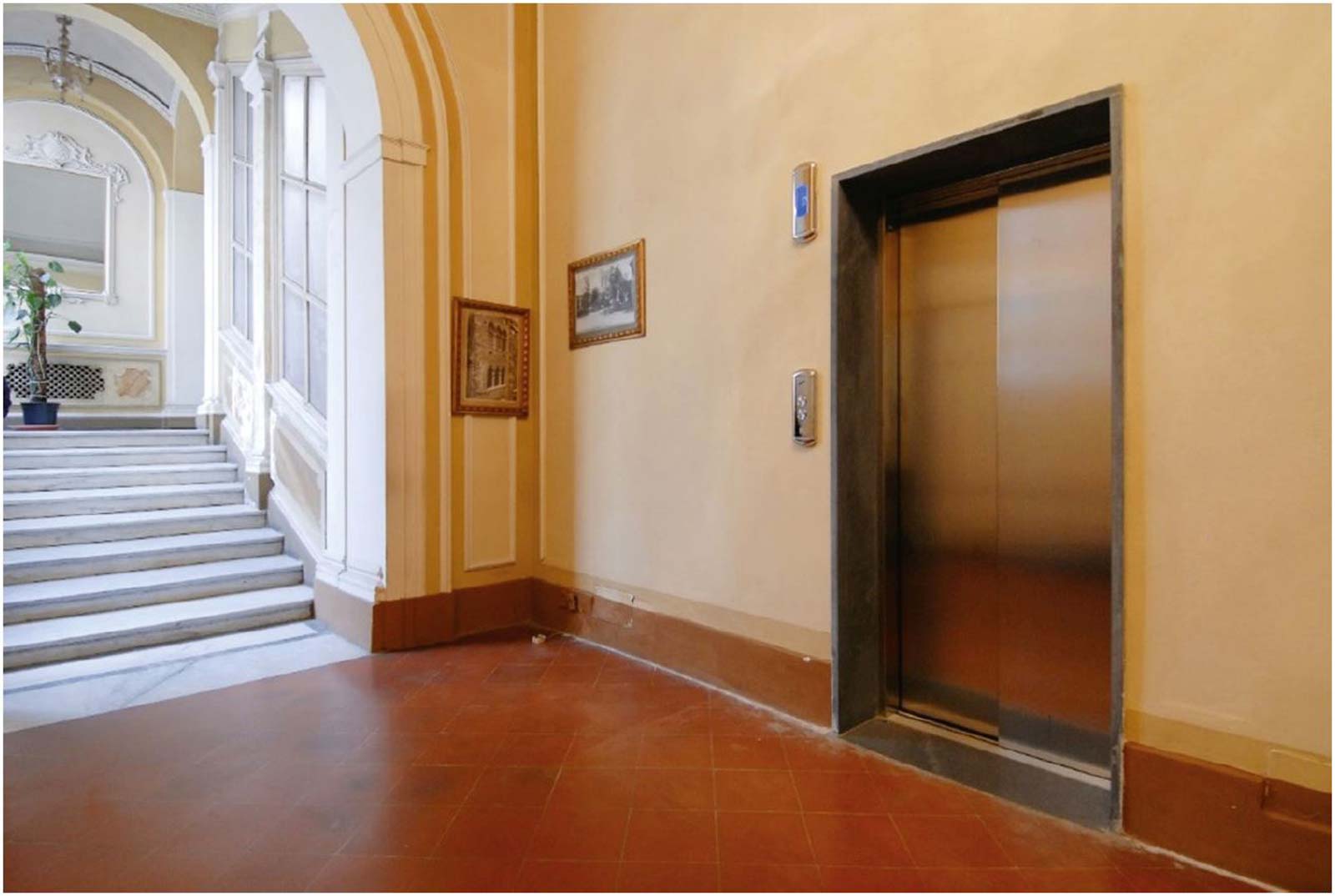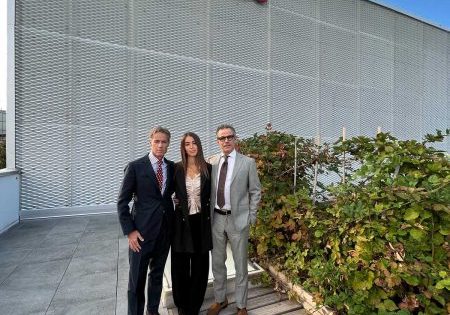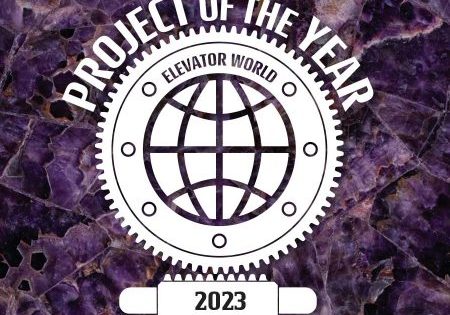by Eduard Amigó
This paper was presented at the 2022 International Elevator and Escalator Symposium in Barcelona, Spain.
Abstract
The global trend for the next decade marks a significant increase in the modernization market. The slow but steady increase in the European region will be offset by a more-than-substantial increase in China. The gradual expansion that has led to China dominating with the installation of 60% of the elevators brought to market each year makes it clear that the Red Dragon will soon become the main player. As usual, a large inventory of new equipment is inevitably associated with the need to repair or replace equipment at the end of its useful life.
So, we are facing a paradigm shift. Those who want to participate in this challenge must lay the foundations for the products with which they intend to attack a market as specific and different as China, with its own characteristics, needs and peculiarities. These participants must maintain or improve the solutions usually required in Europe. In the field of elevator doors, there is also the need to find flexible solutions for reduced spaces; the adaptation of landing interlocks to different car opening systems or vice versa; and the installation of cabin doors in elevators built with semiautomatic landing doors only.
In this context, the new regulations that apply to these markets and the new requirements for connectivity, safety, comfort and energy efficiency must be added to the ever-present challenges in terms of quality and cost.
Introduction
“Elevator modernization” is a well-known concept to those who are dedicated to this industry of vertical people transport and have been in it for years. Unquestionably, it is understood that modernization implies permanent mechanical, electrical and structural changes to the equipment. However, other factors are added to this line of business that are decisive for defining directions in the next decade. In fact, it could be said that it is a concept that sometimes lacks a specific standard or regulation, which makes it difficult to define exactly what the trends in the modernization market will be. Added to this are the incidences of global phenomena such as urban growth, the transformation of cities and the emergence of new, emerging economies on a global scale.
However, it is from these uncertainties and complexities that a new scenario opens up and requires permanent analysis to respond correctly to future demands. In Europe, factors such as the age of buildings and government initiatives that promote their rehabilitation and have a positive impact on user safety and accessibility to urban spaces for people with reduced mobility have led the main companies in the sector concentrating efforts and value proposals on adapting their product portfolio based on market demands.
For its part, Asia, especially China, is beginning to position itself as one of the main actors on the scene. Its growing and increasingly aging population tends to be in large cities characterized by reduced housing spaces, which has caused high-rise buildings to become the most desired option. Although this situation suggests new developments and, therefore, a greater demand for elevators to cover the needs caused by these changes, questions arise regarding the building structure and the socioeconomic particularities that make the Asian giant such a special and motivating segment, insofar as it constitutes itself as an object of reflection and reference for the future of companies in this area.
In this article we will deal with addressing those challenges for the sector that are not assumed as obstacles or barriers, but as windows of opportunity to reinvent the business and direct efforts to offer flexible technological solutions in a globalized world marked by influences — commercial and social — that propel a radical metamorphosis in the structure of the sector.
Only with a correct understanding of market niches and implementation of cutting-edge technologies can those who want to stay current in the market and conquer new territories realize their potential.
The Context and the Challenges
Based on the technical characteristics and structural design that make each lift different, as well as the context or area where it was installed, modernization can be as basic as replacing a controller or a machine or as significant as digging a pit or even remodeling the entire structure to redo it again. In this aspect, the regulations, the state of the equipment, as well as the purchasing power of each region, will end up having a considerable influence on the scope of the project and determine whether the contractor chooses a partial or complete renovation of the vertical- transportation (VT) system.
For a reference of the global market for elevators, according to the consulting firm Global Market Insights, at the end of 2021 the industry was valued at US$99.3 billion and is expected to grow approximately 3% from 2022 to 2028. Although, generally, growth tends to be constant, the economic impact generated by COVID-19 caused a negative effect on the industry due to the low influx of members of the public in commercial premises and public transport, propelling scenarios such as working from home that led to a 90% fall in the use of elevators in offices during the peak of the pandemic in cities such as Barcelona and London.
Despite being one of the sectors hardest hit by the pandemic, “normality” has been gradually establishing itself in VT, and the forecast is promising. The return of people to offices, as well as the creation of post-pandemic spaces that respond to broader and more versatile environments, foster new ways of understanding the market and acting to satisfy these generated demands. Of course, the elevator has an active role in this architectural transformation. Its operation influences mobility and flow between floors, a crucial success factor in any building.
Prior to the coronavirus health crisis, figures for the VT sector grew steadily. According to Francisco González, general manager of the Spanish Lifts Business Federation (FEEDA), between 2014 and 2019, sales volume increased by 19% (compared to 16% general growth of the economy of Spain), weighing the category of maintenance and repair. If we look at it from a more general level, Europe is the continent that leads market share, not only in new installation but also in spare parts, with a joint figure that ranges between 39% and 41%, according to the European Confederation of Builders. For its part, the European Lift Association estimates that there are more than 6 million elevators, of which almost 50% are found in buildings that are more than 20 years old in several of the largest and oldest cities in Europe. Countries such as Spain, France, Italy and others are positioning themselves as important points of demand in terms of modernization.
In relation to this point (although it is true that property owners do not contemplate carrying out modernizations prior to the period that it is recommended to do so), it is also a reality that they are increasingly willing to invest in the renovation of their property due to the fact that it increases not only its value, but its adherence to European initiatives. These initiatives aim to increase the safety of existing lifts, as well as energy efficiency, and are included in the recently added Safety Standard for Existing Lifts known as EN 81-80.
On the other hand, China has begun to position itself as a key player in this field. At the end of 2021, its population reached 1,412 billion, of which 914.25 million live in urban areas (representing 64.72% of the country’s total). This figure is relevant since it implicitly indicates that, in turn, demand for installing lifts also grows in parallel with construction of new buildings to house the high population density.
Similarly, the proposals for the startup of new shopping centers and the extension of public transport systems in the country (railways, subways and airports) are sectors with an existing and future potential market, which will also bring forth the installation of VT equipment that, in a period of less than 10 to 15 years, will require the replacement of some of its components or parts to extend its operational life.
In 2018 alone, the number of elevators in the Chinese market reached more than 6.3 million installed units. It is ensured that in a secondary or tertiary city of the country like Shenzhen, the number of skyscrapers that have been built in 2016 exceeded the total that the U.S. and Australia could have added together in that same year. China completed 56 buildings 200-m tall or more and is at the top of the ranking for the last 25 years, just after Dubai. Today, it is the largest new equipment market globally, accounting for just over 60% of units sold each year.
In addition to the above, the latest government provisions and ideas point to the installation of elevators as an engine for activating the economy due to setbacks caused by the pandemic. The reason for this proposal lies primarily in two factors: as a first point, the intention to modernize up to three million buildings between seven and eight floors that do not have an elevator and that constitute a great social problem for elderly people, those with disabilities and unique situations. The second is to promote new jobs for tens of millions of Chinese workers who are unemployed through projects that are relatively inexpensive since they require an investment of less than US$100,000 for each elevator project.
Despite the attractive outlook that this situation poses for elevator manufacturers, it is important to mention there are factors that work against it when executing or carrying out a modernization project in China. The main reasons are related to:
- Limited availability of components, since the high costs of labor and transport freight make their importation difficult and stimulate their internal production, sometimes with much more basic technologies that can compromise quality standards. This is mainly because national producers do not always have high R&D resources for retro compatible solutions, which makes it difficult to compete in a market dominated by players with experience and the ability to adapt. This ultimately means that, in most cases, it is cheaper to completely replace the entire VT system with a brand-new one.
- Constructed buildings do not contemplate spaces in which an elevator can be installed inside. Therefore, it is necessary to contemplate exterior structures on the façade that allow technical installation. Under this scenario, it can be summarized and argued that the business in that area of the world moves mainly in the following areas: on the one hand, toward the construction of new elevators to cover the lack of these throughout the country, and, on the other, toward the specialized production of electrical and mechanical components for modernization of active equipment (control system, drive system, guides and cabin), as well as future demand that will continue to gain strength and further drive modernization in coming years.
- Technological Trends. Other causes that accelerate this transformation have to do with the growing innovation that has been taking place in models that incorporate energy efficiency attributes and predictive maintenance systems. With environmental provisions and population changes, both in Europe and in China, manufacturers have begun to focus their production on the following areas:
The Industrial Internet of Things (IIoT), Big Data and AI will continue to impose themselves more forcefully on these devices with the aim of offering connectivity and increasing the value of the equipment. The benefits provided by the IIoT, for example, go beyond getting people on or off quickly and comfortably. Now the new generation of elevators offers data to monitor traffic flow, anticipate future failures and improve the user experience in general (and even function as an advertising tool). Since 2016, the elevator industry has been an early adopter of the IIoT, driven by large manufacturers, as well as independent service providers. According to information from the financial company Credit Suisse, the additional income generated by the incorporation of some type of technological improvement to an elevator has added to standard maintenance by 10% and 20%.
Multi rope-less technology in lifts is a possibility that is becoming increasingly closer. A few years ago, TK Elevator presented a prototype that has added horizontal movement, which has begun to revolutionize preconceived standards in the industry. Due to the phenomenon of magnetic levitation (maglev), which is used in modern trains, ropes and pulleys can be dispensed with and replaced by rails that have a 90-degree turn and therefore can move the cabin in various directions and at high speed in high-rise buildings.
Machine-room-less elevators (MRLs) are increasingly sought after in modernizations, especially in commercial structures. When it comes to installing or remodeling, elevator machinery is an important element because, as it is known, space is a limiting factor on many occasions. This new product has advantages (compared to hydraulic lifts) because it eliminates the hydraulic oil tank, which is useful in economic and environmental terms.
Available Solutions and Conclusions
Technological advances do not stop, and the elevator industry is not exempt from the challenges this poses. Hence, the search for new paths and methods to respond effectively and efficiently to changes becomes a fundamental task. The VT industry can respond in a timely manner to market demands. It is evident that, for any action aimed at modernizing elevators, adaptation becomes the steering wheel that traces the paths toward effective planning, proactive strategy and, of course, business success.
This approach also applies to companies that supply doors and elevation systems, especially due to the challenges involved in the technological modification that enables the transformation of parts and components.
Added to this growing technological innovation are other factors that impact the dynamics of production and marketing, mainly reflected in elevator installation and remodeling practices. We refer to energy efficiency and the constant population changes that are configured in determining issues to reconfigure business objectives and the strategies that make them a reality. But, without a doubt, it is the operation located in China that concentrates the greatest expectations and the most robust challenges for the future of the industry.
While today’s industry offers solutions that provide customers with a full range of products and services for any type of modernization, the product portfolio has mostly focused on meeting the needs of the European context, which differs substantially from China due to the height and structure of the buildings, in addition to the frequency of use and several factors specific to the market itself.
While European manufacturers are more concerned with speed than comfort, China is more concerned with comfort (which mainly includes things like acceleration speed, vibration and internal decoration). According to this, although international manufacturers have made efforts to adapt their technologies to the Chinese environment, they still have a long way to go. Under this panorama, it is concluded that the trends and opportunities in the short/medium and long term lie in:
Regarding development trends: There will continue to be a gradual growth in real estate projects such as residential buildings, renovation of old buildings and development of public transport infrastructure. There will also be a greater demand for modernization of elevators already installed, which requires transfers of foreign technology to achieve optimum quality. Local companies will take time to reach production capacity and technological capability.
Regarding the opportunities for maintenance companies, electronic components and elevator production: Opportunities continue to open up for market development in each segment. The potential is great in the production of basic components such as the motor systems and electrical controls (due to the lack of domestic production capacity), as well as in the production of elevators, which is increasing exponentially.
In this order of ideas, only with an adequate pricing policy and an advanced management system do participants and leaders of these markets obtain a good position against the competition. As one of the world leaders in the components industry, and to keep up with the development of this market, Fermator is committed to developing and manufacturing high-quality, advanced technology solutions that are closely aligned with Chinese market demand. In fact, it was one of the first companies to quickly integrate into the elevator value chain in this context and has deployed a flexible production line to get as close as possible to the market.
Since the launch of the variable-voltage/variable-frequency synchronous gate in the mid-1990s, Fermator has devoted its efforts to professional R&D of gate machine frequency conversion technology. Later, in 2002, this same tool was applied to the machine arch elevator door for the first time globally.
As the Chinese market continues to mature, localized operations and cooperative relationships with foreign and local companies grow stronger. However, the gap between Europe and China is notorious and implies a gradual process in terms of ways of working, products that meet European standards and must be adapted, as well as the cost structure involved in reviewing price and operational capacity.
In the standard and middle- to high-end market, the company will continue to strengthen technical expertise, process quality, product performance and door system quality. Of course, we will also strengthen our modular manufacturing systems and expand our coverage in the mid- to low-end market through providing advantages in terms of technology, products and the solution experience. Being as close as possible to customers and providing them with products and services with high added value is the goal of the strategy that every business must pursue. To this end, with the organization and construction of new factories in Changshu and Ningbo, Fermator intends to serve customers with zero distance, which is also a manifestation of our active deployment and enhancement of our strategic position in China.
Similarly, digital adoption is clearly a positive for the industry, as it fundamentally increases value-added generation by service organizations with ultimately greater equipment availability and new data generated.
References
[1] “Modernisation Market About to Grow in China,” 2019, Avire, avire-global.com/market-insights/maintenance-and-modernisation-market-about-to-grow-in-china
[2] “Global Elevators and Escalators,” Credit Suisse, 2022, pp.65
[3] “Future Modernizations,” Rory Smith, ELEVATOR WORLD, March 2022
[4] “Up and Running,” Kaija Wilkinson, EW Europe, July-August 2019
[5] exportapymes.com/documentos/productos/Ie1590_china_maquinaria_elevacion.pdf
[6] Lift Modernisation Challenges, Howkins, R. (2017),
liftescalatorlibrary.org/paper_indexing/papers/00000139.pdf
[7] The Vertical Transportation Handbook, Fourth Edition, Strakosch, G., Carporale R. (2019)
[8] “As China Ages, a Push to Add Elevators Offers a New Kind of Economic Relief,” Keith Bradsher, The New York Times, September 25, 2020.
Get more of Elevator World. Sign up for our free e-newsletter.










